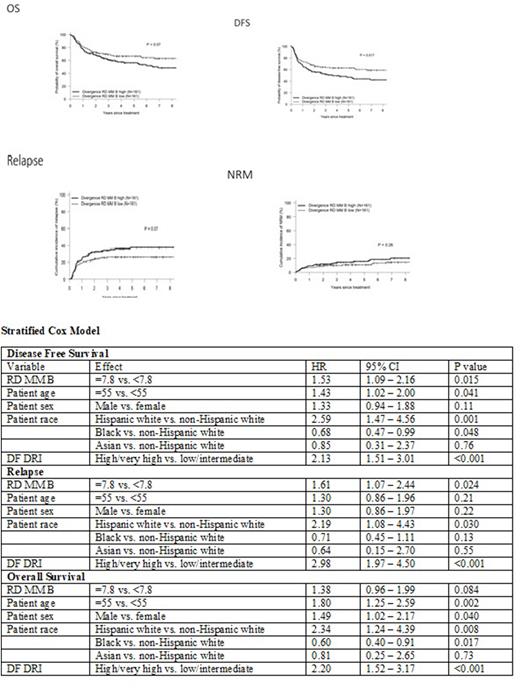Abstract
The Success of allogeneic Hematopoietic cell transplantation (HCT) is dependent on a potent graft versus tumor (GVT) benefit. GVT relies on tumor-associated antigens TAAs that are presented to donor T cells via human leukocyte antigens HLAs. The high diversity of HLAs allows for presentation of immense repertoire of peptides including TAAs. HLAs are polymorphic and each allele presents a different repertoire of peptides referred to as the immunopeptidome. The HLA evolutionary divergence (HED) between alleles of a single individual can dictate the ability to present TAAs. Patients with higher HED can present a more diverse immunopeptidome, including TAAs and potentially have a benefit of higher GVT after allogeneic HCT. The effect of HED was studied among cancer patients receiving immune check point inhibitors where high HED diversity was associated with better survival. Low recipient HEDs in HLA class I and DR were strong predictors for worse overall survival after matched donor HCT. The effect of HED divergence among recipients of haplo HCT with PTCY has not been evaluated. Moreover, the mismatch between donor and recipient in haplo HCT allows for assessing the effect of HED divergence in the donor and in the donor/recipient mismatched haplotype.
To study the effect of HED among recipients of haplo HCT, we analyzed 322 consecutive recipient/donor pairs who received their transplant at our center with a median follow up of 57.2 months (range 18-196). HED was calculated as pairwise differences using two methods: a Grantham distance metric using a perl Script ( https://sourceforge.net/projects/granthamdist/) and manual calculation of one random sample from each analysis to verity results. Data were collected from our database where it was prospectively entered. Patient diagnosis included AML (n=122), ALL (n=68), MDS (n=41), NHL (n=50), other (n=41). Baseline recipient characteristics included a median age of 50 years (19,80), 53% white, HCT-CI≥3 in 50%, Disease risk (intermediate 53%, high/very high 33%), PBSC graft 80% and myeloablative conditioning 49%. Donor characteristics were median age 37 years (13,73), CMV positive 61%, male 61% and female donor to male recipient 21%. Pairwise divergence of HLA class I and class II showed differences in values with HLA-B, DRB1 and DQB1 contributing most to mean HED class I and II. The HED values for recipient included mean HLA class I 6.85 (HLA-A 7.08, B 8.24 and C 3.47), class II 8.58 (DRB1 10.97, DQB1 10.06 and DPB1 4.06). Donor mean HED HLA-class I was 6.5 (HLA-A 6.43, B7.93 and C 4.61), mean HLA-class II was 8.84 (DRB1 10.93, DQB1 11.24 and DPB1 4.06). The mean HEDs for the mismatched haplotype between donor and recipient were class I 6.49 (A 6.43, B 7.8, C4.94) and Class II 8.74 (DRB1 10.48, DQB1 10.06, DPB1 4.06). Next, we performed a univariate Cox model to identify HED variables that are associated with OS, DFS, NRM and relapse. Based on continuous and dichotomized divergence (median cutoff) univariate cox, a high HED in class I mismatched donor-recipient haplotype was significant for worse DFS (HR 1.11, p=0.020), and relapse (HR 1.11, p=0.02). Also, high HED in HLA B in mismatched haplotype was significant for worse OS (HR 1.07, p=0.02), DFS (HR 1.09, p=0.002), higher relapse (HR 1.10, p=0.003) and similar NRM to low HED. AS HLA-B was the biggest contributor to class I HED mean and the only predictor of outcomes in a univariate cox, we evaluated HLA-B in mismatched haplotype ( donor-recipient) further in a Multivariate analysis using dichotomization based on median level. Variables in the analysis included were age (<55, ≥55), gender, race, diagnosis, cell source, regimen intensity, HCT-CI (0-2, ≥3), DRI (low/intermediate, high/very high), CMV status; donor age (<38, ≥38), donor gender, female-donor-to-male-recipient, donor CMV status, year of transplant. The multivariate cox analysis showed that high HED (≥7.8 vs <7.8) was significant for worse DFS ( HR 1.53, 95% CI 1.09-2.16; p=0.01), higher relapse (HR 1.61, CI 1.07-2.44, p=0.024) and similar NRM and OS (table 1) . The significance was reproduced in the lymphoid and myeloid lineages. In Summary, among patients receiving haplo with PTCY, a high divergence in HLA-B mismatch haplotype increases relapse risk and worsens DFS. In addition to this being the first analysis to assess HED in a large haplo cohort, the negative consequences of HED can be mitigated by selecting donors with lower HED in the mismatched haplotype at HLA-B.
Disclosures
Solh:ADC Therapeutics: Research Funding; Partner Therapeutics: Research Funding.
Author notes
Asterisk with author names denotes non-ASH members.


This feature is available to Subscribers Only
Sign In or Create an Account Close Modal